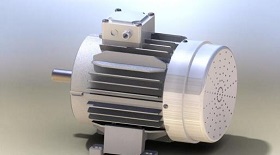Linear motor
Due to the limitations of its own structure, the traditional "rotary motor + ball screw" feed drive mode of the machine tool is difficult to achieve breakthrough improvement in feeding speed, acceleration, rapid positioning accuracy and other aspects, which cannot meet the higher requirements of ultra-high-speed cutting and ultra-precision machining on the servo performance of the feeding system of the machine tool. The linear motor directly converts electrical energy into mechanical energy of linear motion without any transmission device of intermediate conversion mechanism. It has the advantages of high starting thrust, high transmission stiffness, fast dynamic response, high positioning accuracy and unlimited stroke length. In the feed system of the machine tool, the biggest difference between the direct drive of the linear motor and the driving of the original rotary motor is that the mechanical transmission link between the motor and the working table (drag plate) is eliminated, and the length of the feeding chain of the machine tool is shortened to zero, so this transmission mode is also known as "zero transmission". Because of this "zero transmission" mode, the original rotary motor drive mode can not achieve the performance indicators and advantages.



